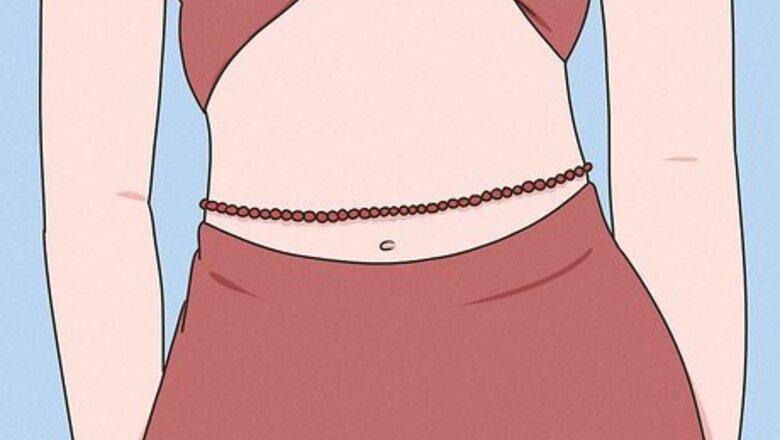
views
- Red beads symbolize confidence, vitality, bravery, or passion, while yellow beads can represent wisdom, clarity, awareness, energy, and joy.
- Gold beads symbolize good health, power, and wealth, black beads represent power and protection, and white beads represent purity, light, and truth.
- Evil eye charms protect against evil, envy, or negativity. Green aventurine represents luck, prosperity, and wealth, while rose quartz symbolizes love, compassion, and healing.
Waist Beads Color Meanings

Red Those who wear red or maroon-colored waist beads are filled with confidence, vitality, bravery, and passion. Red is also associated with sexual energy, making them the perfect accessory to add a little extra spice to life. In the United States, waist bead artists often associate their colors with chakra cleansing. Red is also the color of the root chakra at the base of your spine—wearing red waist beads may help anchor a person to the physical world and make them feel grounded and secure.

Orange Orange waist beads often signify high energy, vibrance, and self-confidence. Those who wear orange beads demonstrate that they believe in themselves, their power, and their ability to succeed in every part of life. Orange is the color of the sacral chakra in your lower abdomen, which is associated with creativity, pleasure, and sexuality.
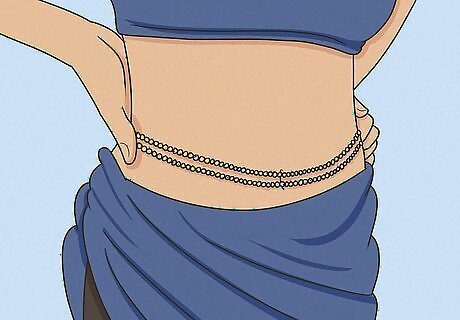
Yellow Yellow is the color most commonly associated with the sun, so it makes sense that yellow waist beads can represent energy and joy. In addition, yellow waist beads invite clarity, awareness, and wisdom in all aspects of life. Yellow is associated with the solar plexus chakra, which is located a few inches above the belly button and serves as the basis of your strength, power, and self-esteem.
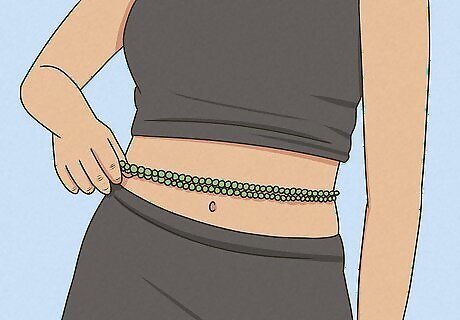
Green The color green often represents nature, so it’s only natural that wearing green-colored waist beads can symbolize abundance, prosperity, hope, healing, and fertility. Green waist beads might be the perfect choice for those looking to manifest a little extra healing, comfort, and love in their lives. Green is also the color of the heart chakra, which enhances feelings of joy, truth, kindness, compassion, forgiveness, empathy, and unconditional love.
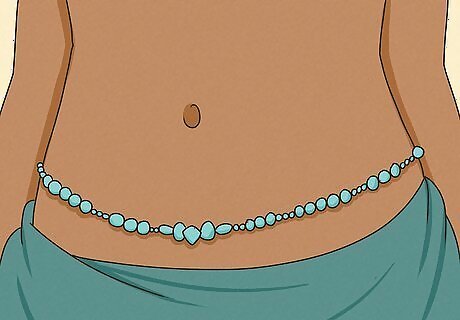
Turquoise Turquoise is a beautiful green-blue color that makes the perfect addition to any string of waist beads. Wearing turquoise beads can promote self-awareness and open communication in one's personal life and career.
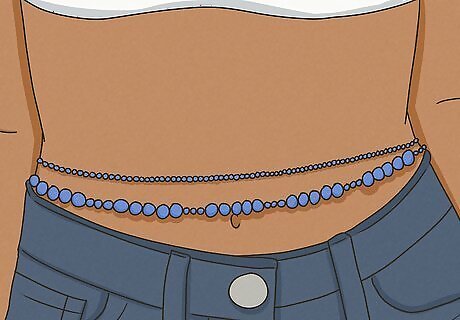
Blue In many cultures, blue represents peace, loyalty, truth, and knowledge. Wearing blue waist beads allows someone to embody these traits. Because blue is the color of the sky and endless oceans, these waist beads can also signify faith, devotion, healing, harmony, and insight. Blue beads were also socially meaningful for enslaved persons in the colonial and pre-Civil War South. Blue is also the color of the throat chakra, which is believed to allow someone to live authentically, speak freely, listen to others around them, and express themselves.
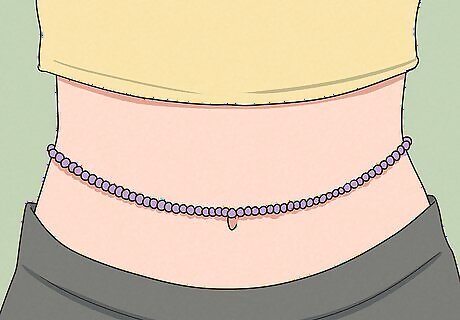
Purple Purple has a diverse range of symbolism across different cultures, but often it represents spirituality, wisdom, and royalty. Wearing purple waist beads celebrates knowledge and power and allows someone to reconnect with their spiritual side. In Ghana, purple is the color of grief and mourning. The purple chakra, or crown chakra, is located at the top of the head and is in charge of spirituality, consciousness, enlightenment, and personal fulfillment.
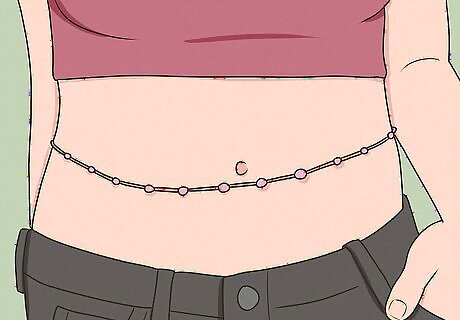
Pink Pink is a soft color, often representing care, femininity, beauty, love, and kindness. Choosing waist beads that incorporate pink helps celebrate the body and enhance one's compassionate, affectionate side.

Brown As the color of the earth and the bark of trees, brown waist beads represent earth and stability. Wearing brown waist beads can promote a deeper connection to the planet and foster groundedness and strength.
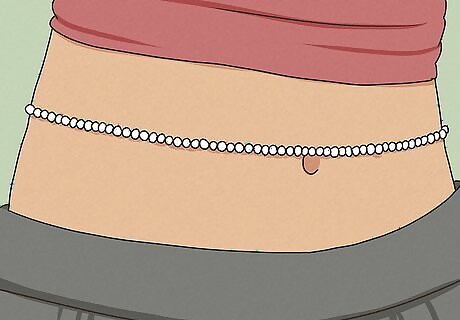
White In cultures around the world, white often represents light, truth, and purity. Combining white beads with other colors or wearing an all-white strand enhances one's ability to be honest and free of negativity. The white stripe in the middle of the Nigerian flag represents unity and peace.
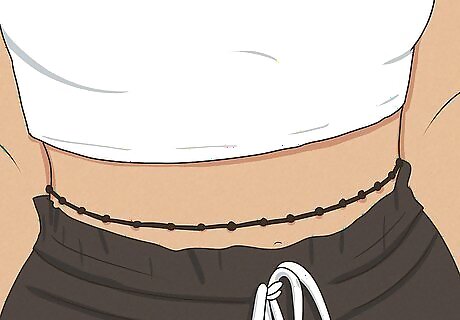
Black Black is a strong color that’s believed to symbolize power and resilience. Black waist beads are traditionally worn to ward off negative energy, protect the wearer, and provide them with courage and inner strength.

Gold As the color of a precious metal, gold waist beads are said to help promote good health, power, and wealth. They may also invite extra prosperity and abundance into life. The Ashanti people of West Africa often associate gold with glory and prosperity.
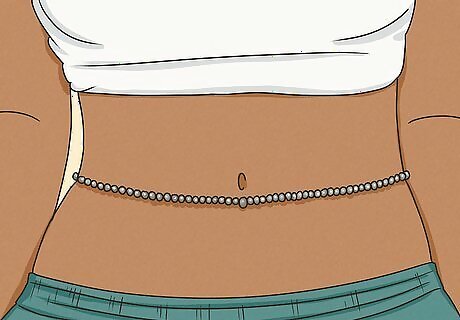
Silver or gray Grey and silver are often associated with things like aging, mirrors, and peace, and can help bring out the beauty of other colors. They can promote serenity, purity, wisdom, and self-reflection.
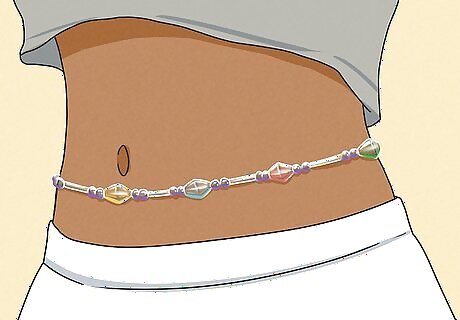
Clear It’s not surprising that clear beads can represent clarity. They also speak to a person's giftedness and cleverness.
Waist Beads Crystal and Charm Meanings

Evil eye In Senegal and other African countries, the evil eye is an envious or evil glance some people use to cast malevolent curses or spells. Some believe that wearing an evil eye charm on your person can provide protection against evil, envy, or negativity. In Nigeria, Ghana, and other parts of West Africa, women add charms, chakra-healing crystals, or oils to waist beads to protect themselves against negative energy.
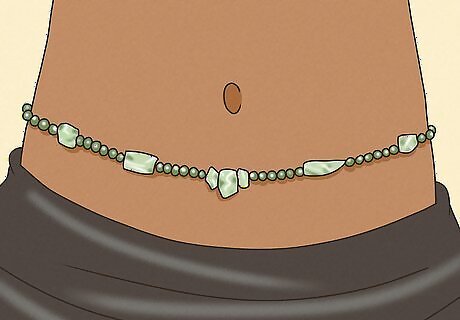
Green aventurine Green aventurine is a type of quartz crystal often associated with luck, prosperity, and wealth. Wearing a waist bead that incorporates this beautiful stone may infuse one's life with good luck, opportunities, and abundance.
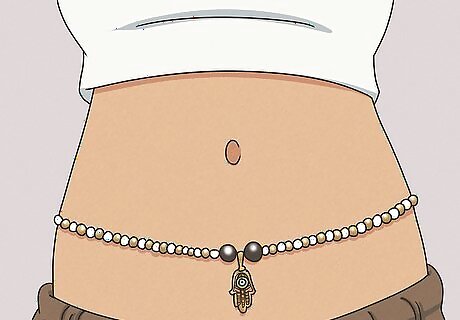
Hamsa The hamsa, sometimes called the Hand of Fatima or Eye of Miriam, is a symbol of a hand with an eye in the center that offers protection against bad luck and the evil eye. Wearing a hamsa on your waist beads may protect people from negative energy, ward off evil, and bless them with good luck. Hamsas are commonly used by the Jewish and Muslim faiths. To avoid cultural appropriation, take time to learn and understand the symbol before adding the charm to your waist beads.
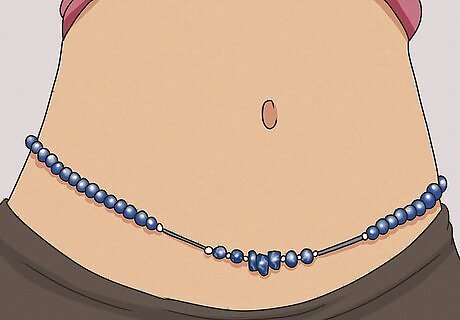
Lapis lazuli Lapis lazuli is a beautiful deep blue gemstone that’s been used in jewelry, amulets, hair combs, and dagger handles for thousands of years. Today, the stone is often associated with peace, wisdom, intuition, truth, and insight.

Quartz Wearing clear quartz has been associated with clarity, balance, and energy. Quartz is also said to open the mind and heart to higher guidance and enhance the inner spirit. Wearing a piece of quartz on your waist beads may imbue a person's spirit with transparency and their body with spiritual energy. Quartz is also said to amplify the power of other crystals.
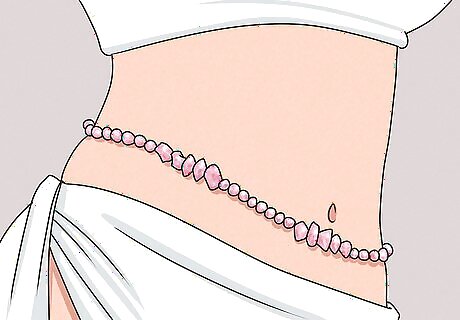
Rose quartz Rose quartz is one of the best crystals for manifesting love and compassion. It also encourages reconciliation, empathy, and a sense of inner peace to those who use it. Adding rose quartz to a waist bead strand may help manifest a new relationship or celebrate self-love and peace of mind.
What do waist beads represent?
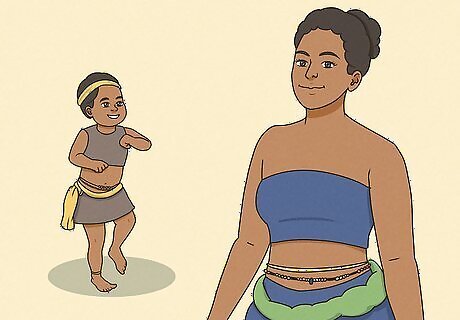
Maturity and growth In West Africa and other parts of the world where waist beads are used traditionally, beads are associated with womanhood, growth, and maturity. Girls going through puberty might wear their first waist beads, and outgrowing a pair of beads might mark the transition into a new stage of life. In Ghana, all babies wear waist beads during their naming ceremonies. Only girls continue to wear the beads as they grow older. In Nigeria and other African countries, beads are put around a baby’s waist to monitor their weight and growth. In many West African traditions, mothers tie a pair of waist beads onto their daughters during their first period to symbolize the passage into womanhood.

Fertility and sensuality Many women use waist beads to attract the opposite sex, and some use them in intimate settings to enhance their sensuality. In Ghana, waist beads were worn by women around their bikini line to strap their menstrual cloth to. Some women wear specific beads during sex when they’re trying to conceive a child. The Krobo people in Ghana add larger beads or bells to a woman’s waist beads when she’s fertile to alert potential nearby suitors. In smaller villages in Nigeria, there’s a common myth that saying an incantation while wearing waist beads can prevent pregnancy. Yoruba women in West Africa count the beads to keep track of their menstrual cycle and ovulation days as a form of contraception. Some African women wear waist beads under clothing for only her and her chosen partner to see, similar to wearing a set of lingerie. Some pregnant women might wear special waist beads they believe can protect the mother and the growing baby.

Celebration of heritage While people of all races and ethnicities can wear waist beads, they originally came from Africa. Waist beads are a popular way for Black people around the world to connect to their ancestors and show pride for their heritage and cultural practices. Many Black people in colonial countries don’t know their West African lineage because of the transatlantic slave trade—some wear waist beads to honor their unknown African ancestors. As a result of colonialism, many African traditions like waist beads were considered sinful. Now, they’re seen as a way for Black women to celebrate and love their bodies.
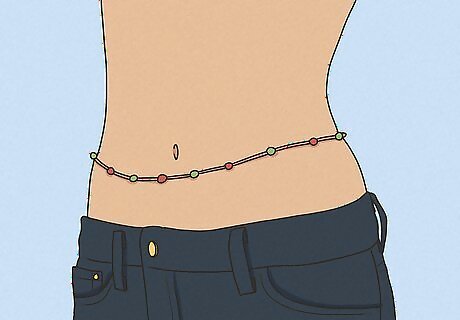
Body positive weight awareness Waist beads are often used to keep track of any weight loss or gain in the abdominal area. People of all sizes and shapes can comfortably wear waist beads as a body-positive way to keep track your weight without reading the numbers on a scale. Waist beads don’t stretch, so if you gain weight, the beads will sit higher on the waist or feel tight. If you lose weight, the beads will fall farther down to the hips or feel loose. Wearing adjustable waist beads can prevent them from differently based on changes to the abdomen, like weight gain or bloating.
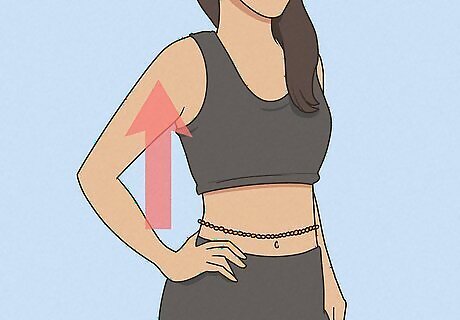
Posture correction Some people use waist beads to correct the posture of their stomach and back. Wearing waist beads can serve as a reminder to sit up straight, engage the stomach muscles, and relax the back.
Choosing & Wearing Waist Beads

Decide where you’d like the waist beads to sit on your body. You might wear the beads high on your waist, down at your hips, right at your belly button, under your breasts, or where your abdomen curves in at the sides. Where you want your beads to hang depends on your own personal preference. You can also wear as many strands as you like around your abdomen.
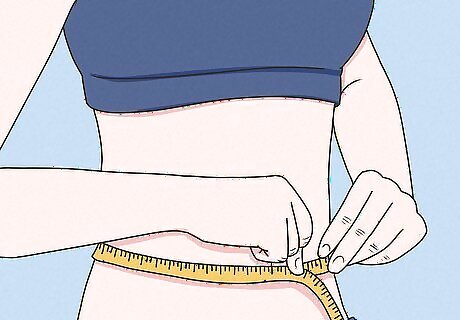
Measure that area and pick the beads you’d like. Wrap a measuring tape or a long piece of string on bare skin around the part of your body you choose. Try not to suck in your stomach or wrap the tape or string too tightly around your body—your abdomen might grow or shrink throughout the day, which might make them uncomfortable to wear. If you’re using a string, mark on it where the two ends meet, then measure its length with a ruler. If you’re wearing waist beads for weight loss, measure right below your belly button so that as you lose weight, they’ll fall and as you gain weight, they’ll stretch. Some artists make permanent waist beads, which means the string doesn’t stretch and doesn’t have a clasp. They’re designed to stay on your body until they break or you cut them off.
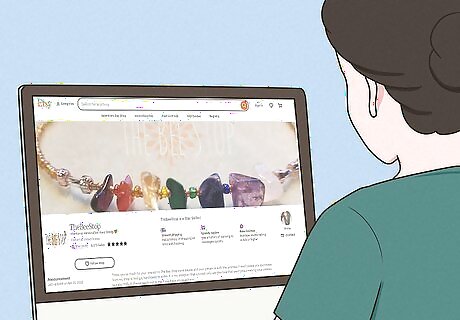
Buy ethically sourced waist beads from an African country or African artists. People of all races and ethnicities can wear waist beads for any reason, but to avoid cultural appropriation, it’s best to purchase waist beads from a business that ethically sources them from an African country or a person of African origin. Here are a few online storefronts you can buy them from: TheBeeStop (on Etsy) BrujaDeLaCocina (on Etsy) Alaiyo Waistbeads Toffie Adinkra Expo




















Comments
0 comment